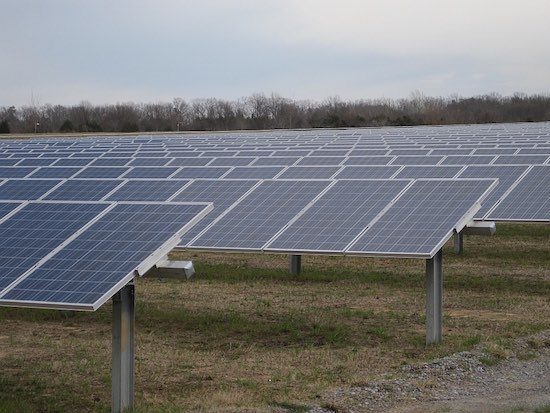Indian energy giant Adani Group has received the green light to begin building a 140MW solar farm north of Whyalla in South Australia, the company’s second major large-scale solar project to get the nod for development in Australia in the past two weeks.
Adani – which is perhaps best known in Australia for its controversial plans to develop the nation’s largest coal mine in Queensland’s Galilee Basin – said on Wednesday it would begin construction of the $200 million PV project some time next year, after receiving development approval.
The plant, to be located 10km north of Whyalla on SA’s Port Lincoln Highway, will generate 100MW, with potential capacity of 140MW, with the addition of battery storage said to be under consideration for the solar farm.
It is proposed the power will be injected into the 132kv network between the Whyalla Central and Cultana substations.
The approval for the SA plant follows news from two weeks ago that Adani was ready to start work by on a 100-200MW solar farm proposed for south-west of Moranbah in Queensland’s Bowen Basin – the heart of Australian coal country.
As we reported here, the chief of Adani Australia’s renewable energy division, Jennifer Purdie said work would begin on the first 65MW of the Rugby Run Solar Farm by the end of the year, after Adani gained development approval from the Isaac Regional Council.
Like the Rugby Run project, the Whyalla project is significant for its location, in a steel manufacturing hub that is at the centre of a green industrial revolution.
Helping to lead this revolution is UK billionaire Sanjeev Gupta, who last week followed up his purchase of the bankrupt Whyalla steelworks with the purchase of a majority stake in Zen Energy, the Adelaide-based solar and battery storage company chaired by economist Professor Ross Garnaut.
As Garnaut told Reneweconomy last Thursday, SIMEC Zen, as the new joint venture will be called, hopes to reduce energy costs at Whyalla by at least the 30 per cent achieved by Gupta when he took over British Steel and transformed its energy supply to majority-based renewables.
“We think we can do at least that,” Garnaut says. Zen is looking to an 80MW solar plant near Whyalla, as well as pumped hydro in nearby exhausted iron ore mines. EnergyAustralia is also looking at pumped hydro at Cultana.
As for Adani’s Whyalla solar plant, the company says it is committed to commencing works in 2018, and could be generating power by early 2019.
In May, Adani signed a contract to source $73 million worth of Whyalla steel that would be used to construct a double-tracked rail link between its Carmichael mine site and a port at Abbot Point.









